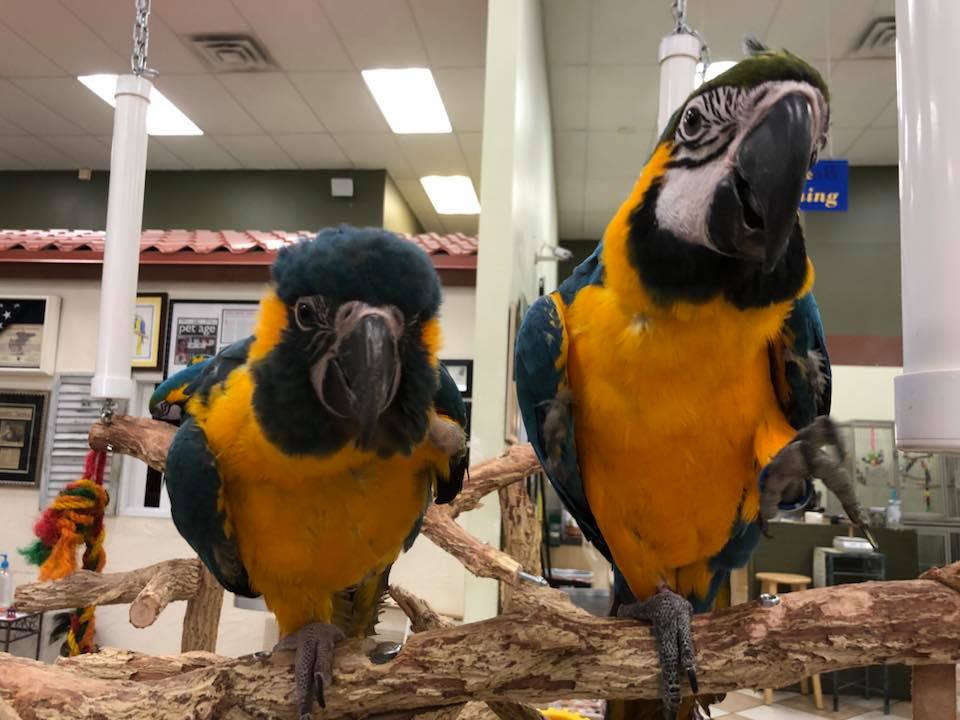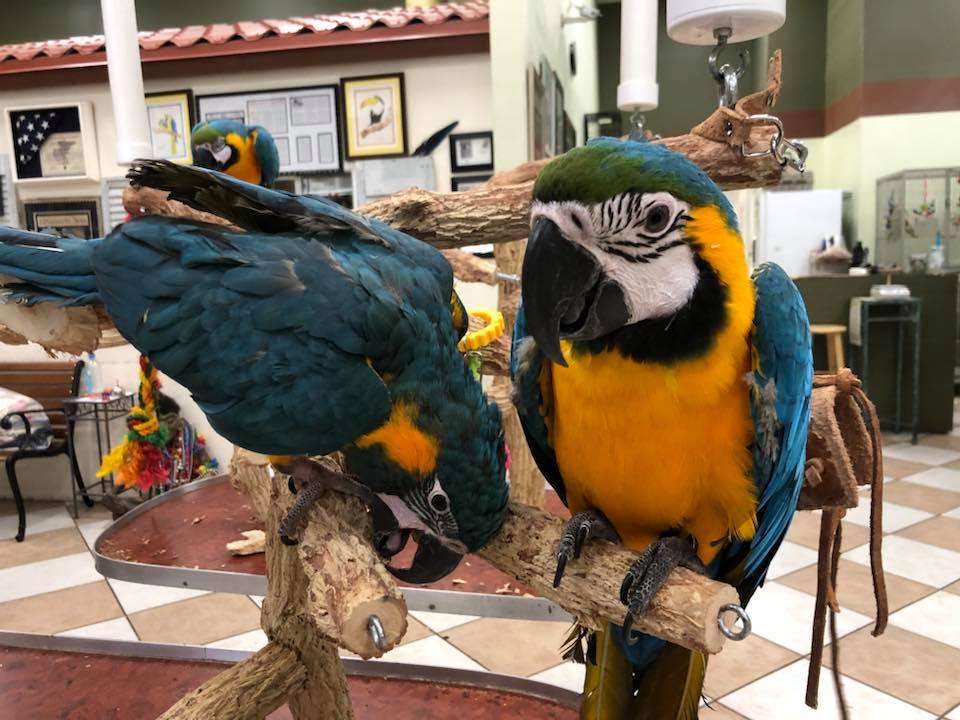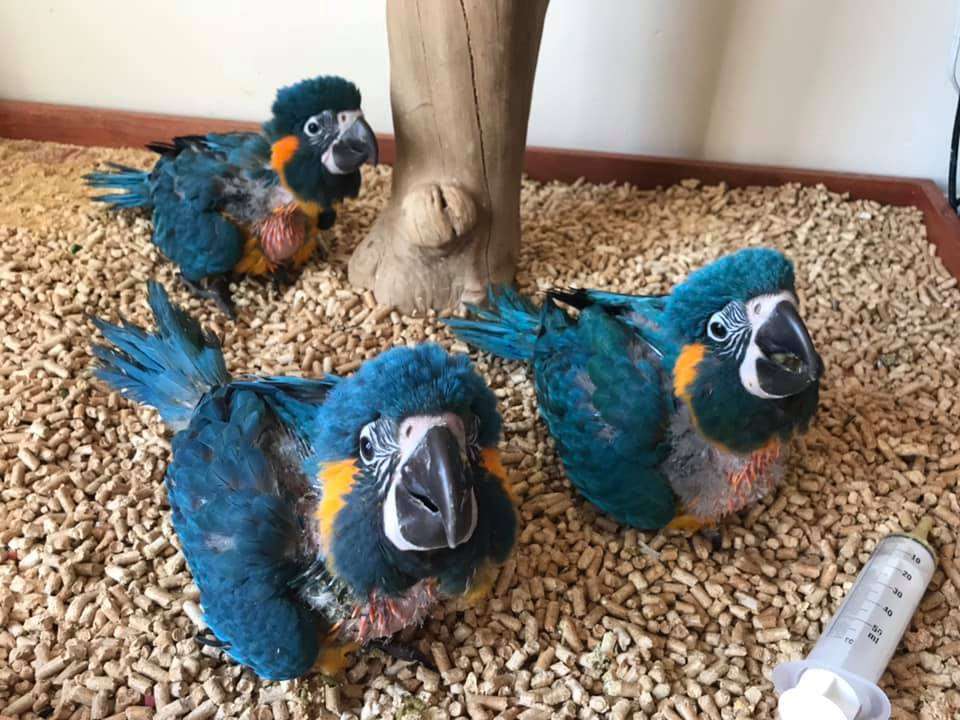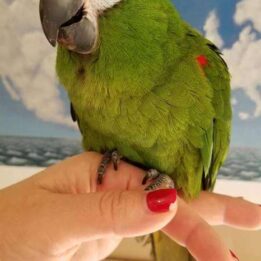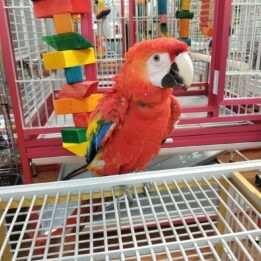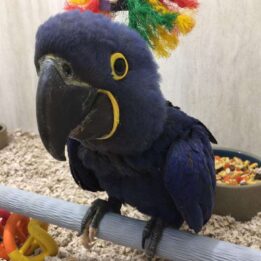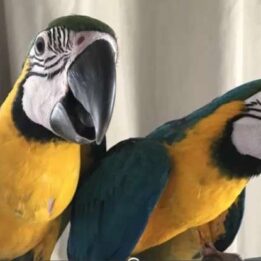Blue Throat Macaw are beautiful birds. They have a bright blue face, neck, and back. Their chest is a stunning golden-yellow color. Blue Throats are slightly smaller than Blue and Gold Macaws. Blue Throats are known to have strong personalities, a home that offers time, patience, and commitment would do very well with a Blue Throat. As with all large macaws, a Blue Throat will require a large enclosure, a lot of toys, and a lot of love. Ideally, the minimum cage size for this size bird is 40″x30″x75″ with a 1″bar spacing. At Parrot Stars, we focus on education, nutrition, and conservation. We work very hard to help educate our customers on parrot companionship. Prior to taking a bird home, we will provide information on proper housing, creating a safe environment, diet, behavior, hormones and much more.
Every hand fed baby is weaned on to a high variety diet. They are weaned onto fruits and veggies, a soak and sprout mix we make here in the store, high variety seed that we also make here in the store, and naturally colored pellet.
Blue-throated macaw, also known as the Caninde macaw, is a macaw endemic to a small area of north-central Bolivia, known as Los Llanos de Moxos. In 2014 this species was designated by law as a natural patrimony of Bolivia, where it is known as Barba Azul, which means ‘blue beard’ in Spanish.
The forehead, crown, neck, wings, and tail are light greenish-blue. The naked face is striped with dark greenish-blue feather lines.
Blue Throat Macaw has a striking plumage that is turquoise blue on the head and back, and the chest, abdomen, thighs, and the underparts of the wings are bright yellows. They have long tails that are orange below and blue on top.
This species has distinctive blue cheeks and throat patches. Males may have a darker patch of blue on the throat.
The large bill is dark grey-black, hooked, and strong enough to crush even larger nuts. The beak also comes in handy when climbing around the trees. The dark grey feet are zygodactylous (with 2 toes pointing forward and 2 toes pointing backward) – an adaptation that helps them grasp securely the branches as they perch or move around in trees.
The eyes are pale yellow with an indistinct greyer ring near the pupil.
The dark grey feet are zygodactylous (with 2 toes pointing forward and 2 toes pointing backward) – an adaptation that helps them grasp securely the branches as they perch or move around in trees.
Immature birds look similar to the adults but have a darker throat band, shorter tail, and dark brown or grey irises.

